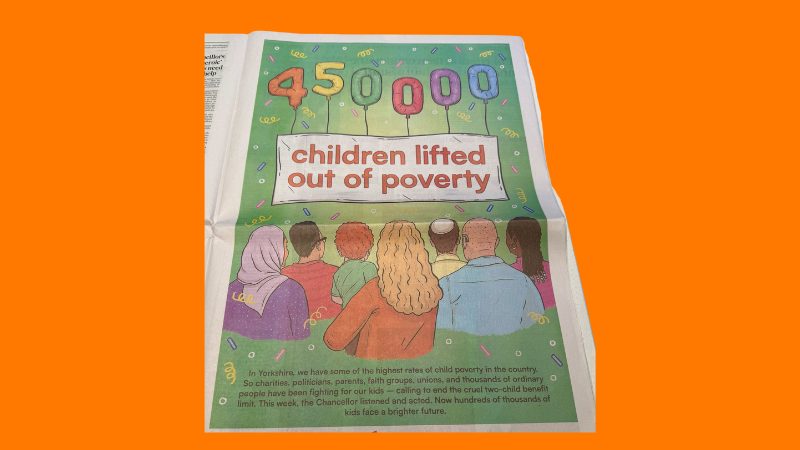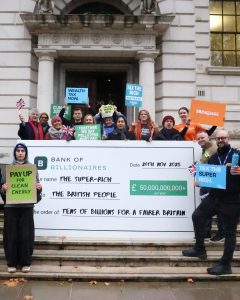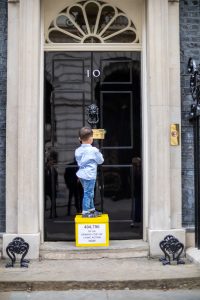
May 1st, 2015
Public spending: IFS report
By 38 Degrees team
The Institute for Fiscal Studies is an independent organisation that researches economic issues. They’ve looked into and compared the political parties’ plans for public spending after the election.
This is the summary of what they found (the full document is here). We’ve highlighted some of the key parts relating to cuts.
You could also find out information using the BBC policy guide here.
Summary
• The financial crisis and associated recession resulted in a sizeable, and mostly permanent, increase in borrowing. While the coalition government has overseen a reduction in borrowing from a peak of 10.2% of national income in 2009—10 to 5.0% in 2014—15, whoever forms the next government still faces the task of finishing the job of reducing borrowing back to sustainable levels.
• This election briefing note considers the fiscal plans of the Conservatives, Labour, the Liberal Democrats and the Scottish National Party (SNP). All four parties have said they would reduce borrowing in the coming parliament. None has managed to be completely specific about how much they want to reduce borrowing or exactly how they would do it. In analysing their policies, we have had to make some assumptions about their precise aims based on their stated aspirations and policies.
• All four parties’ plans imply further austerity over the next parliament. The Conservatives are planning a reduction in borrowing over the next parliament of 5.2% of national income, which would result in a surplus of 0.2% of national income by 2018—19. Labour have been less clear about their plans for borrowing, but their ambition to balance the current budget would be consistent with a smaller reduction in borrowing of 3.6% of national income, bringing it to 1.4% of national income by 2018—19. The Liberal Democrats are aiming for a borrowing reduction of 3.9%, to be achieved a year earlier (i.e. in 2017—18), while the SNP tax and spending plans imply a borrowing reduction of 3.6% of national income, but this would not be completed until 2019—20.
• The differences between the Conservatives on the one hand, and Labour and the SNP on the other, are substantial. The Conservatives need to find much more substantial spending cuts; Labour and the SNP would reduce the deficit and debt significantly more slowly.
Conservatives
• Under the Conservative plans, debt as a share of national income could be reduced from 80% of national income in 2014—15 to 72% by 2019—20. Under Labour, Liberal Democrat and SNP plans, debt in 2019—20 could be more like 77%, 75% and 78% respectively. Under the assumptions we have made, debt would be about £90 billion more in 2019—20 (in 2015—16 terms) if Labour’s plans were implemented than if the Conservatives’ plans were implemented. Higher debt entails higher debt interest payments, and would potentially leave the government less well placed to deal with future adverse events.
• Since the Conservatives’ plans imply the greatest reduction in borrowing, they have the greatest job to do in terms of setting out how they would achieve this. Despite this, their detailed tax policies are a net giveaway of 0.1% of national income, their detailed social security measures would only provide a tenth of the cuts that they have said they want to deliver, and their commitments on aid, the NHS and schools would (relative to a real freeze) increase spending on these areas by 0.3% of national income.
• The Conservatives have squared this circle with an aspiration to raise 0.2% of national income (around £5 billion) from clamping down on tax avoidance, unspecified further cuts to benefits amounting to 0.5% of national income (about £10 billion) and a further real-terms cut to ‘unprotected’ departmental spending of £30 billion that was not mentioned in their manifesto. So the Conservatives need to spell out substantially more detail of how they will deliver the overall fiscal targets they have set themselves.
• Under the Conservatives’ plans, and assuming they find the social security cuts and revenues from tax avoidance that they have targeted, total departmental spending would need to be cut by 7.1% between 2014—15 and 2018—19. This would be a slightly slower rate of cuts than over the previous parliament (an average cut of 1.8% per year compared with 2.4% per year between 2010—11 and 2014—15). Departmental spending would fall to its lowest level in real terms since 2003—04. Outside of aid, the NHS and education (which have been promised various levels of protection by the Conservatives), other departmental spending looks to be facing cuts of 17.9% between 2014—15 and 2018—19. This would be on top of the 18.1% cut experienced between 2010—11 and 2014—15, leading to a cumulative cut over the whole period from 2010—11 to 2018—19 of 32.8%). These ‘unprotected’ areas include defence, transport, law and order, and social care.
Labour
• Labour have been much less clear about exactly what level of deficit reduction they want to achieve and by when, but they have given more detail of how they would achieve any deficit reduction. Their detailed measures would boost rather than reduce tax revenues. The cost of their protections for public services is about the same as the Conservatives’ — though they have not spelt out a commitment to increase NHS spending by as much as the Conservatives have. In practice, it might not be surprising were Labour to deliver increases to NHS spending of at least that scale. They have, however, been clear in their manifesto that some cuts to ‘unprotected’ departments would be required. 3 IFS Election Briefing Note 2015
• It looks as if Labour might need only relatively small cuts to departments other than aid, NHS and education spending — on top of the cuts already in place for 2015—16 — to bring about a balance on the current budget by 2018—19. But we can only say ‘looks as if’, because Labour’s pledge to ‘get a surplus on the current budget’ is vague. Given the coalition government’s investment plans, it would be consistent with any reduction in borrowing totalling 3.6% of national income or more. If a Labour government were to increase investment spending, their pledge would also be consistent with a smaller reduction in borrowing than that. Of course, if Labour are actually aiming for a lower level of borrowing than we assume, then they would have more detail to spell out in terms of how they plan to get there.
Liberal Democrats
• The Liberal Democrats are aiming for a tightening between that of Labour and the Conservatives. They have failed to spell out details of how they would achieve much of their tightening, relying heavily on unspecified measures to reduce tax avoidance and evasion (£7 billion) as well as some unspecified social security cuts (£2 billion). They are also relying on cuts to departmental spending (£12 billion), although — unlike for the Conservatives — these were mentioned in their manifesto. Their plans require real cuts to departmental spending of 3.4% between 2014—15 and 2017—18 (or 9.0% outside of the NHS, education and aid). This is predicated on their aspiration to raise 0.3% of national income (£7 billion) from highly uncertain measures to reduce tax avoidance and evasion by 2017—18. By the end of the parliament, the Liberal Democrats claim to expect to raise £10 billion — twice as much as the Conservatives and a third more than Labour — from such measures.
SNP
• The SNP’s fiscal numbers imply the same reduction in borrowing over the next parliament as for Labour, although the reduction in borrowing under their plans would be slower. They would cut less to start with but the implication of the plans they have spelt out in their manifesto is that the period of austerity would be longer than under the other three parties we consider. Their tax takeaways appear to be offset by their tax giveaways, while they would increase the generosity of the social security system. As a result, while the SNP would increase total spending in real terms each year, departmental spending would be broadly frozen between 2014—15 and 2019—20, and departmental spending outside of the NHS and aid could be facing a cut of 4.3%. The SNP’s stated plans do not necessarily match their anti-austerity rhetoric.
• Unfortunately, the electorate is at best armed with only an incomplete picture of what it can expect from any of these four parties.

















